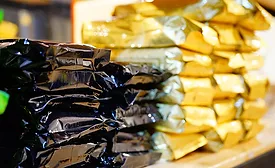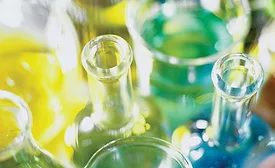Home » Keywords: » isocyanate
Items Tagged with 'isocyanate'
ARTICLES
Top 5 News that Sticks
BASF Builds Massive Interest with Construction Chemicals Divestment
Readers were drawn to another big divestment last week, as BASF announced an agreement to sell its Construction Chemicals Business.
January 13, 2020
Construction and Automotive Industries to Drive Strong Global Isocyanates Demand
The global isocyanates market is witnessing consistent demand in the construction industry due to its reactive chemical properties and its usage in the production of adhesives, foams, and elastomers.
January 2, 2020
Univar Solutions to Distribute Dow Polyurethanes in North America
Univar Solutions will serve as an authorized channel for Dow’s polyurethane products across the U.S. and Canada.
June 7, 2019
New Tin- and Mercury-Free Organometallic Catalysts for CASE Urethane Applications
New catalysts offer performance characteristics in multiple applications.
June 7, 2017
Q&A About Polyurethanes
What types of chemical structures could be built into a polyurethane adhesive to optimize heat resistance?
Formulation recommendations can be made to address each aspect of thermal stability.
May 2, 2016
Ask Dr. Dave
Ask Dr. Dave: What is the difference between a polyurethane adhesive and a polyurea adhesive?
Dave Dunn's September 2014 column.
September 2, 2014
Q&A About Polyurethanes: Prepolymers with Low Isocyanate Content
What might cause problems with reproducibility in prepolymers with low isocyanate content?
March 1, 2014
Keep the info flowing with our newsletters!
Get the latest industry updates tailored your way.
JOIN TODAY!Copyright ©2025. All Rights Reserved BNP Media.
Design, CMS, Hosting & Web Development :: ePublishing





